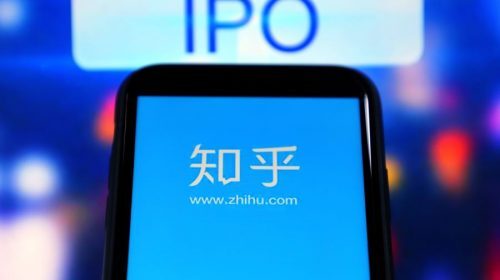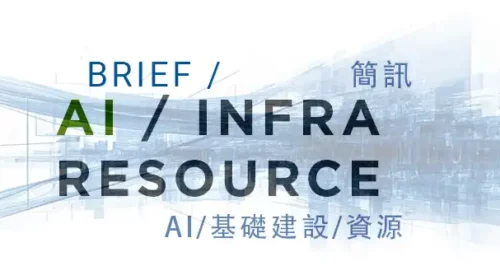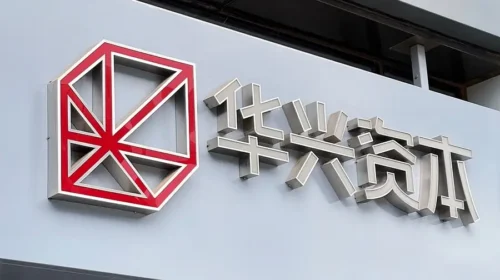Zhida looks for IPO charge as EV distress drains its coffers

China’s leading maker of home-based electric vehicle chargers hopes to raise new funds from a Hong Kong listing as its cash runs dangerously low
Key Takeaways:
- Shanghai Zhida Technology has filed for a Hong Kong IPO, jumpstarting a plan that was first reported in February
- The maker of home-based chargers is coming under intense pressure from the EV makers that are its main customers, and are demanding big discounts and delaying payments
By Doug Young
Signs of industries in distress can often be found in their supply chains, which certainly seems to be the case with Shanghai Zhida Technology Development Co. Ltd. The maker of home-based electric vehicle (EV) chargers filed for a Hong Kong IPO last week, submitting a listing document filled with troubling signals that reflect the difficulties China’s EV sector is facing.
While much is written about exploding EV sales in China, far less ink goes to the huge losses the country’s EV makers are recording. Within the field, only BYD (1211.HK; 002594.SZ) and Tesla (TSLA.US) consistently make profits. Newer arrivals like Nio (NIO.US; 9866.HK) and Leapmotor (9863.HK) are far more reflective of the group, reporting massive losses of 20.7 billion yuan ($2.8 billion) and 4.2 billion yuan, respectively, last year alone.
Those EV makers are Zhida’s biggest customers, accounting for more than half of its sales – and at times up to 70% – in each of the last four years. As those companies look for any way possible to cut costs and trim their losses, companies like Zhida are the first to feel the pinch.
The bottom line for Zhida is that the company is in dire need of cash, saying quite directly in its listing document that its board believes “that our group has sufficient working capital for our present requirements and for the next 12 months from the date of this document.” That’s not exactly too reassuring for potential investors in this IPO.
That said, Zhida appears to be a relatively big player in a very crowded EV charger space, meaning it could emerge as an industry leader if it can survive the current intense pressures that it and its peers are feeling. There are currently some 4,000 EV charger makers globally, about three-quarters making home-based products, with the others focused on more sophisticated products for use in public charging stations.
The market for EV charging stations was worth 6.1 billion yuan globally in 2023, with about 2.8 billion yuan of that in China, according to third party market data in Zhida’s listing document. The company controlled 9.5% of the global market for home-based EV chargers based on units sold over the last four years, making it the world’s largest company by that metric. But it was only fourth largest with 5.9% of the market based on sales volume, reflecting the much lower unit prices it charges in its home China market that accounts for about 90% of its business.
Word first emerged that Zhida was planning to list back in February this year, when several media reported it had hired investment bank Shenwan Hongyuan to underwrite the IPO and could file its listing document imminently. Those reports said it was targeting HK$1 billion ($129 million) in fundraising, which would imply a valuation of at least $500 million, based on Hong Kong’s requirement that a company list at least 25% of its shares.
Valuation drop
Things obviously didn’t go exactly as Zhida had hoped. In the meantime, the company’s cash dropped to just 100 million yuan at the end of September, or about half the 195 million yuan it had at the start of the year, which is probably why its board believes it currently has enough money for the next 12 months but perhaps not much more.
Valuation-wise, the HK$1 billion fundraising target from the earlier reports also looks like a bit of a stretch. Valuations for other EV charger makers vary a bit, from price-to-sales (P/S) ratios of as much as 2.44 for domestic rival Shenzhen Sinexcel (300693.SZ) to just 1.14 for U.S-based ChargePoint (CHPT.US).
A relatively generous ratio of about 2 for Zhida, combined with its 2023 sales of 671 million yuan, would value the company at about 1.34 billion yuan, or $184 million – far less than the $500 million valuation tied to the February reports. That would also sharply reduce its fundraising ability, though any money it can get from the IPO could probably help to fund its operations for at least another year or two.
All that said, we’ll take a closer look at some of the company’s many metrics that all deliver a similar message showing how Zhida is coming under quite a bit of pressure these days. At the highest level, the company’s revenue crested in 2022 and has been coming down ever since. That includes a 9.5% decline to 440 million yuan in the first nine months of this year from 486 million yuan in the year-ago period.
In fact, the revenue declines are a direct result of the company’s customers demanding lower prices and not declining unit sales. Its unit sales actually rose 18% in the first nine months of this year to 269,240 from 227,860 a year earlier. But its average price per charger dropped 14% to 822 yuan from 960 yuan over the same period, resulting in the overall revenue decline.
As competition heats up at home, the utilization rate for Zhida’s two main manufacturing facilities in Anhui province dropped to just 51.1% in the first nine months of this year from a peak of 128% in 2022. The company is trying to find relief from the overheated China market by doing more business overseas, where prices are still rising. It launched a new manufacturing facility in Thailand in April this year, and it’s quite possible that overseas sales could make up a bigger portion of its total as that facility ramps up.
But back at home, things are showing no sign of relief anytime soon. Zhida noted that as its customers come under growing stress, they are taking increasingly longer to pay their bills – not a good sign for a cash-strapped company like Zhida. The company said its trade receivable turnover days grew to 250 in the latest nine-month period, up from 186 days in 2021.
On the bottom line, Zhida’s loss ballooned to 122 million yuan in the latest nine-month period from 26.6 million yuan a year earlier. At the end of the day, the clock appears to be ticking down on Zhida as its cash runs low and the pressures it’s feeling in China show no signs of easing. A successful IPO could provide the funds it needs to survive another year or two until the situation improves – though it’s also quite possible that things could just get worse instead.
To subscribe to Bamboo Works weekly free newsletter, click here






